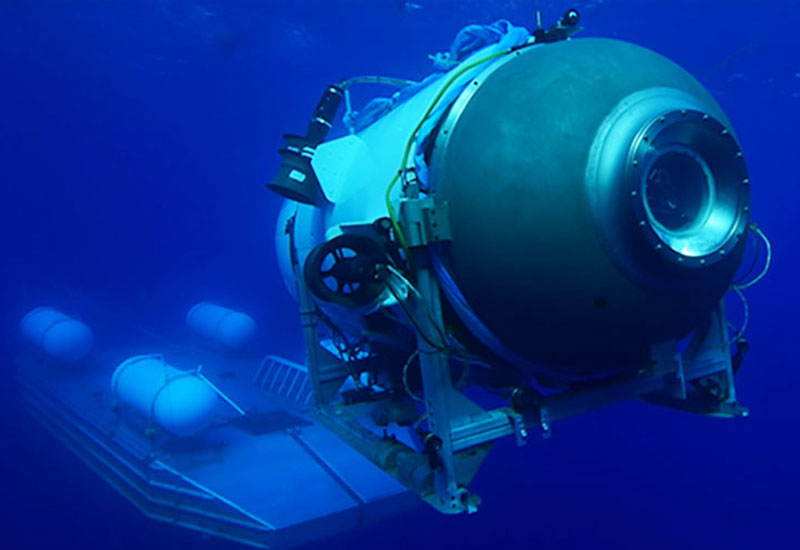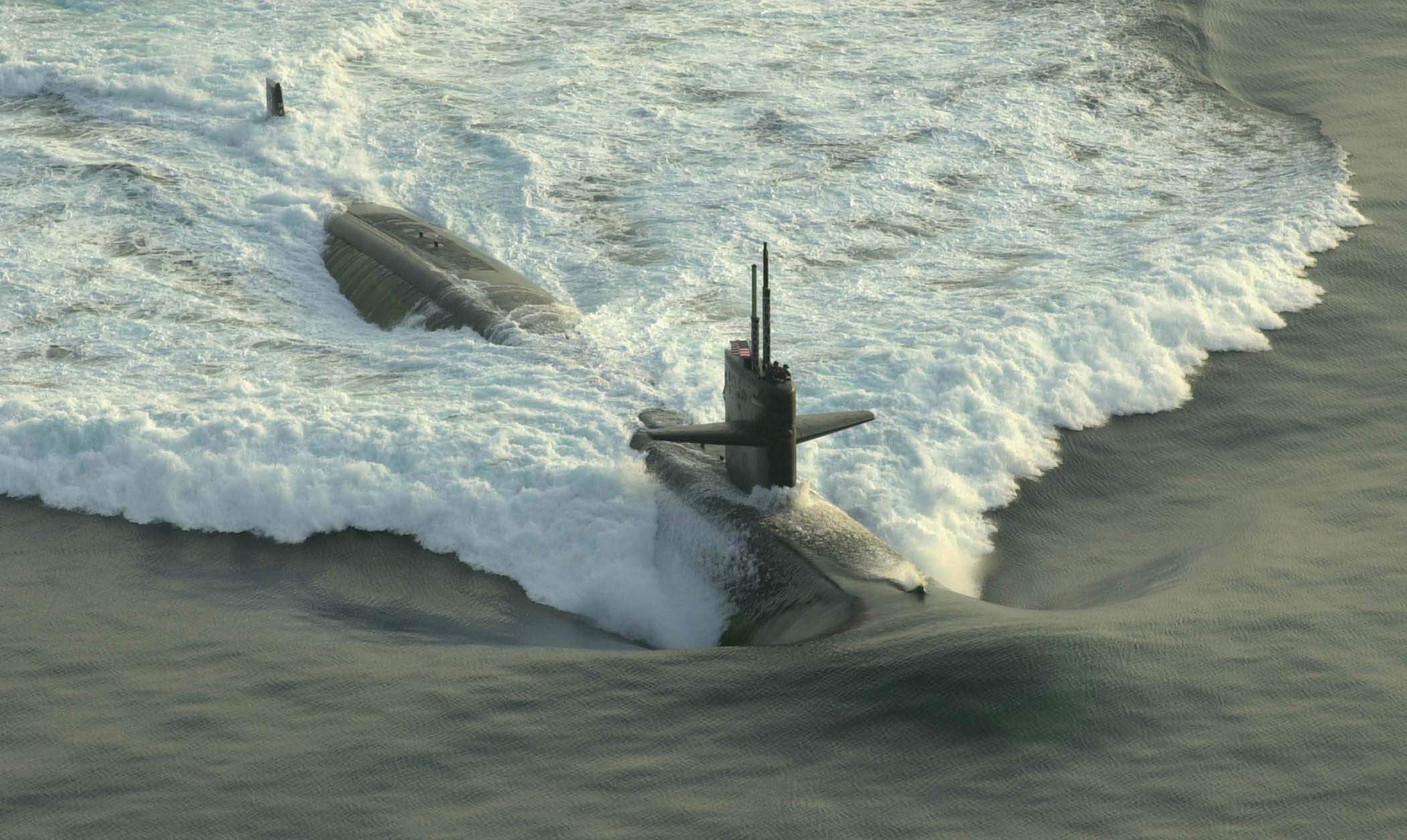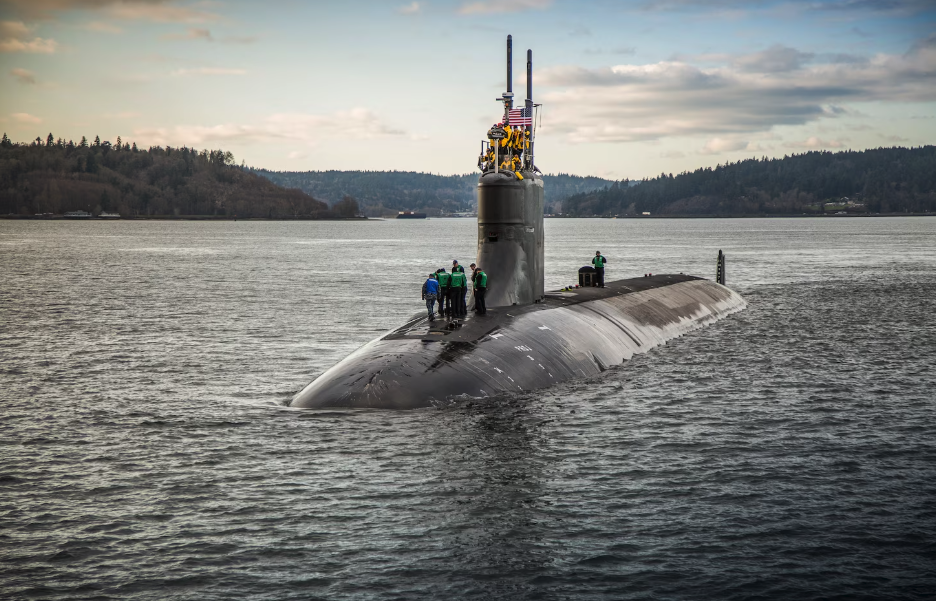Even America’s best submarines couldn’t get anywhere near the missing Titanic sub
- By Alex Hollings
Share This Article

A massive search is underway in the North Atlantic for a civilian crewed submersible that went missing while attempting to explore the wreckage of the Titanic. Unfortunately, even if this submersible is located on the sea floor, the extreme depth of the ocean in the area it went missing would be far too much for even the U.S. Navy’s most advanced and capable nuclear-powered submarines.
On Sunday morning, the OceanGate Expeditions’ experimental submersible known as Titan was launched from the research ship Polar Prince for what was to be an expedition to the wreckage of the famed Titanic — which rests approximately 12,500 feet (3,800 meters) below the surface. Approximately one hour and 45 minutes after Titan’s launch, however, the Polar Prince lost contact with it and the submersible has not been heard from since.

With limited oxygen and CO2 scrubbers onboard, a race against time immediately began, with the U.S. Coast Guard using sonars to attempt to locate the sub below the surface and various aircraft scouring the surface itself.
Because of the design of this 21-foot submersible, the five occupants would still be trapped inside its air-tight cabin even if their vessel reaches the surface, making the hunt from the air just as essential as the search below. On Tuesday, it was reported that the sub had about 40 hours of air remaining.
Early Wednesday morning, tapping sounds were recorded below the surface — suggesting that the sub was indeed stuck far below… and that five occupants were still alive.
Unfortunately, at these extreme depths, there are only a handful of submersibles on the planet that can withstand the pressure, making mounting a rescue attempt, once the submersible is located, a very difficult, and perhaps even impossible, endeavor.
Related: The 5 worst submarine disasters of recent history
The US Navy’s submarine fleet

The United States Navy operates some of the most advanced and capable submarines ever to sail, commonly split into three operational categories: ballistic missile subs, guided missile subs, and attack subs. Each has unique capabilities and — just as importantly — limitations
Ballistic missile submarines, often called Boomers, carry America’s nuclear submarine-launched ballistic missiles (SLBMs) and serve as the seaward leg of America’s nuclear triad. The U.S. Navy operates 14 Ohio Class ballistic missile submarines.
Guided missile submarines are the same platforms as the Navy’s boomers, but were converted to launch conventional munitions and deploy special operations troops. The U.S. Navy operates four Ohio Class guided missile submarines.
Attack submarines, often called Hunter-Killers, are purpose-built to hunt down and destroy the most capable enemy submarines in the world, and as such, are among the most broadly capable within the murky depths of the world’s oceans. The U.S. Navy operates three different classes of attack subs, with 31 Los Angeles class vessels, 19 Virginia Class subs, and three massive Seawolf class hunter-killers.
All of these vessels can operate for extended durations while submerged, but not one of these warrior submersibles could get anywhere near the Titan.
Related: How do America’s nuclear submarines get resupplied at sea?
How deep can America’s nuclear submarines go?

The OceanGate Expeditions Titan is believed to be stuck on the ocean floor some 12,500 feet down (3,800 meters), which is far deeper than most crewed and even uncrewed submersibles or submarines are capable of going.
It’s worth noting that it’s widely believed that the U.S. Navy underreports the maximum operating depth of its submarines so as not to provide the nation’s enemies with insight into the vessels’ true capabilities. But their reported maximum depths are, nonetheless, largely accurate in terms of how deep these vessels can go before safety becomes a significant concern. That is to say that, while these subs may be capable of reaching a bit deeper than has been reported, their real maximum depths are unlikely to be significantly deeper than claimed.
Los Angeles Class

America’s Los Angeles Class attack submarines have been in service since 1976 and have a reported maximum operating depth of 650 feet (200 m), though, in former Washington Post reporter Patrick Tyler’s book, Running Critical, which explores the secretive world of America’s submarine service, he claims these subs are actually capable of reaching as deep as 950 feet (290 m). According to Janes, these vessels can reach depths of up to 1,475 feet (450 m) before their structural integrity becomes compromised.
Ohio Class

America’s Ohio class ballistic missile submarines have been in service since 1981 and have a reported maximum depth of 800 feet (243 m), though it’s been widely reported that they may actually be capable of reaching as far down as 1,500 feet (457 m) before their hulls become compromised.
Virginia Class

America’s Virginia-Class attack submarines have been in service since 2000, and were designed to serve as a more affordable but still broadly capable alternative to the immensely expensive Seawolf class after the Cold War came to a close. These vessels have reportedly been tested to depths of 800 feet (240 m), but are reportedly actually capable of reaching as deep as 1,600 feet (490 m).
Seawolf Class

America’s massive Seawolf-class submarines may have entered service more than a quarter-century ago, but they remain among the most powerful, capable, and stealthy subs ever to set sail. With only three of these multi-billion dollar submarines built, Seawolf-class vessels have reportedly been tested as deep as 1,600 feet (490 m), but thanks to an outer hull comprised of two-inch-thich HY-100 steel alloy, these incredible hunter-killers have a reported crush depth of a whopping 3,000 feet (914 m).

Unfortunately for the missing crew of the OceanGate Expeditions Titan, this means that even the Navy’s most capable nuclear submarines would literally implode at depths some 9,500 feet higher than the seafloor where the Titan went missing.
Feature image courtesy of OceanGate Expeditions
Editor’s Note: This piece was corrected to state that communication with the “Titan” was lost one hour and 45 minutes after its launch. It had previously stated that it was lost 45 minutes after its launch.
Read more from Sandboxx News
- Russian military is using suicide tanks to stop Ukraine’s counteroffensive
- Why did Colt produce the M5 family of rifles?
- Today’s Artificial Intelligence isn’t quite what you think (but it’s still crazy)
- With an eye to Russia, US sends 100 aircraft for NATO’s biggest air exercise ever
- How will the war in Ukraine end and what about Crimea?
Related Posts
Sandboxx News Merch
-

A-10 ‘Thunderbolt Power’ Framed Poster
$45.00 – $111.00 Select options This product has multiple variants. The options may be chosen on the product page -

‘Sandboxx News’ Camo Trucker Hat
$29.00 Select options This product has multiple variants. The options may be chosen on the product page

Alex Hollings
Alex Hollings is a writer, dad, and Marine veteran.
Related to: Breaking News, Gear & Tech

Where do NATO reporting names come from?

How US Special Forces took on Wagner Group mercenaries in an intense 4-hour battle

F-16s carrying the A-10’s 30mm cannon actually saw combat

How does China’s new J-35 stealth fighter compare to America’s F-35?
Sandboxx News
-

‘Sandboxx News’ Trucker Cap
$27.00 Select options This product has multiple variants. The options may be chosen on the product page -

‘AirPower’ Classic Hoodie
$46.00 – $48.00 Select options This product has multiple variants. The options may be chosen on the product page -

‘AirPower’ Golf Rope Hat
$31.00 Select options This product has multiple variants. The options may be chosen on the product page -

‘Sandboxx News’ Dad Hat
$27.00 Select options This product has multiple variants. The options may be chosen on the product page
